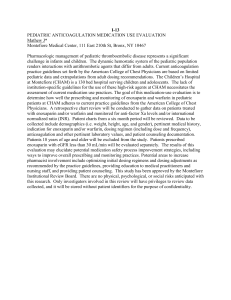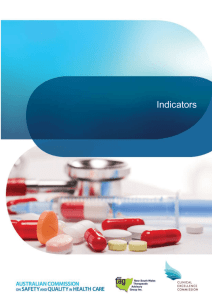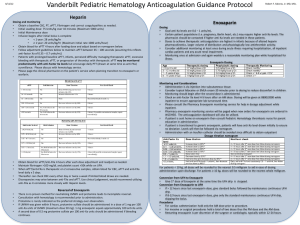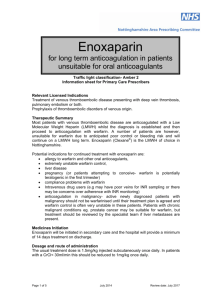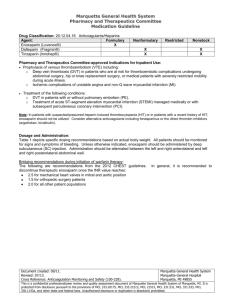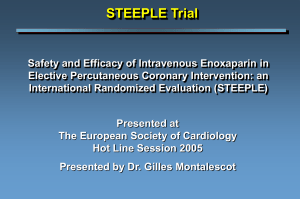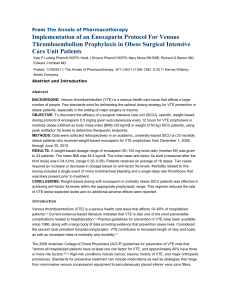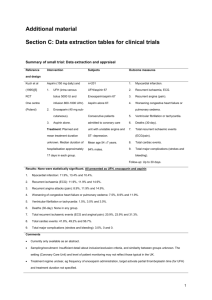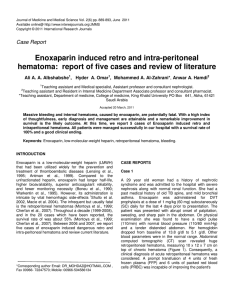1.3 Percentage of patients prescribed enoxaparin whose dosing
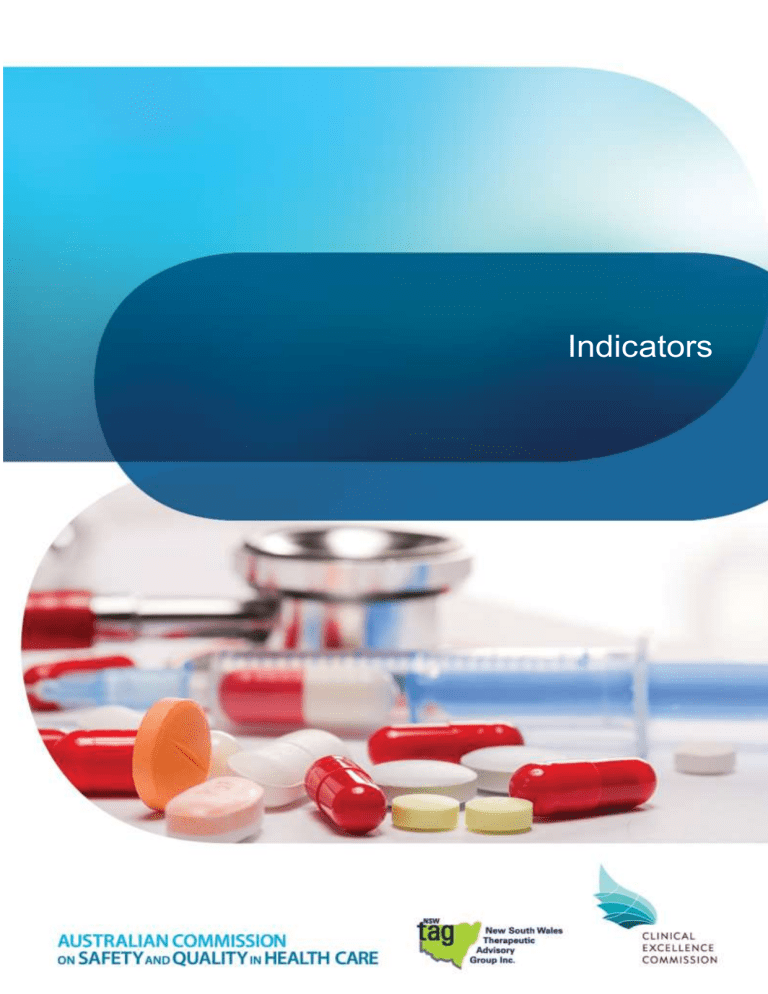
Indicators
Antithrombotic therapy
QUM domain: Safe and effective use
1.3 Percentage of patients prescribed enoxaparin whose dosing schedule is appropriate
Purpose
This indicator assesses effectiveness of processes that encourage safe prescribing practices for high risk medicines such as enoxaparin.
Background and evidence
Choice of dose for enoxaparin is dependent on the indication for therapy.
1,2 The enoxaparin dose for prevention of venous thromboembolism (VTE) is usually 20 mg or 40 mg daily, depending on risk.
2 The enoxaparin dose for treatment of VTE is based on weight.
2 The dose may need to be adjusted if the patient has renal dysfunction.
2
Patients are at risk of either bleeding or clot progression if inappropriate doses are prescribed. Documentation of both indication and weight are therefore critical to appropriate prescribing and should be recorded on the medication chart.
Key definitions
Dosing schedule is appropriate means that the prescribed dose and frequency of enoxaparin are appropriate for the indication, patient’s weight and renal function in accordance with a protocol approved by the drug and therapeutics committee, or in the absence of a local protocol, in accordance with the recommendations in the approved product information.
1 Rounded doses are acceptable.
Data collection for local use
Please refer to the section Using the National Quality Use of Medicines Indicators for Australian Hospitals for guidance on sample selection, sample size, measurement frequency and other considerations.
Inclusion criteria: Patients aged 18 years and over prescribed enoxaparin.
Exclusion criteria: Nil.
Recommended data sources: Medication charts, medical notes and pathology results.
The data collection tool for QUM Indicator 1.3 assists data collection and indicator calculation.
Data collection for inter-hospital comparison
This indicator may be suitable for inter-hospital comparison. In this case, definitions, sampling methods and guidelines for audit and reporting need to be agreed in advance in consultation with the coordinating agency.
Indicator calculation
National Quality Use of Medicines Indicators for Australian Hospitals 2014
2
Numerator = Number of patients prescribed enoxaparin whose dosing schedule is appropriate
Denominator = Number of patients prescribed enoxaparin in sample
Limitations and interpretation
Good documentation supports quality patient care 3 and is a critical component of management with potentially toxic medicines such as enoxaparin. Poor communication can result in adverse drug events.
4 Thus it is important for both indication and weight to be clearly documented on the medication chart to h elp inform dosing decisions. This indicator assumes that actual patient weight is used when calculating doses. In obese patients, dose calculation on the basis of lean body weight may be more appropriate.
Further information
Medication Safety Self Assessment for Antithrombotic Therapy in Australian Hospitals 5 (MSSA-AT) can help identify potential strategies for improvement with this and other indicators. MSSA -AT encourages development of robust systems for safe prescribing, dispensing, administration and m onitoring of antithrombotic therapy. MSSA-AT is available at www.cec.health.nsw.gov.au
This indicator can be used to assist hospitals in meeting the National Safety and Quality Health Service Standard 1
[items 1.2.1, 1.2.2, 1.5.2, 1.6.1, 1.6.2, 1.7.2] and Standard 4 [items 4.2.1, 4.2.2, 4.5.1, 4.5.2, 4.11.1].
6
References
1. Product Information: Clexane
® and Clexane Forte®. Sanofi-Aventis Pty Ltd, 2011.
2. Australian Medicines Handbook. Australian Medicines Handbook Pty Ltd, 2012.
3. The Good Clinical Documentation Guide. National Centre for Classification in Health, Commonwealth of Australia, 2003.
4. MacKinnon NJ, ed. Safe and Effective: The eight essential elements of an optimal medication-use system. Canadian Pharmacists Association, 2007.
5. Medication Safety Self Assessment for Antithrombotic Therapy in Australian Hospitals: Institute for Safe Medication Practices USA
(Adapted for Australian use by NSW Therapeutic Advisory Group and the Clinical Excellence Commission), 2007.
6. Australian Commission on Safety and Quality in Health Care. National Safety and Quality Health Service Standards. Sydney, ACSQHC, 2012
National Quality Use of Medicines Indicators for Australian Hospitals 2014
3
